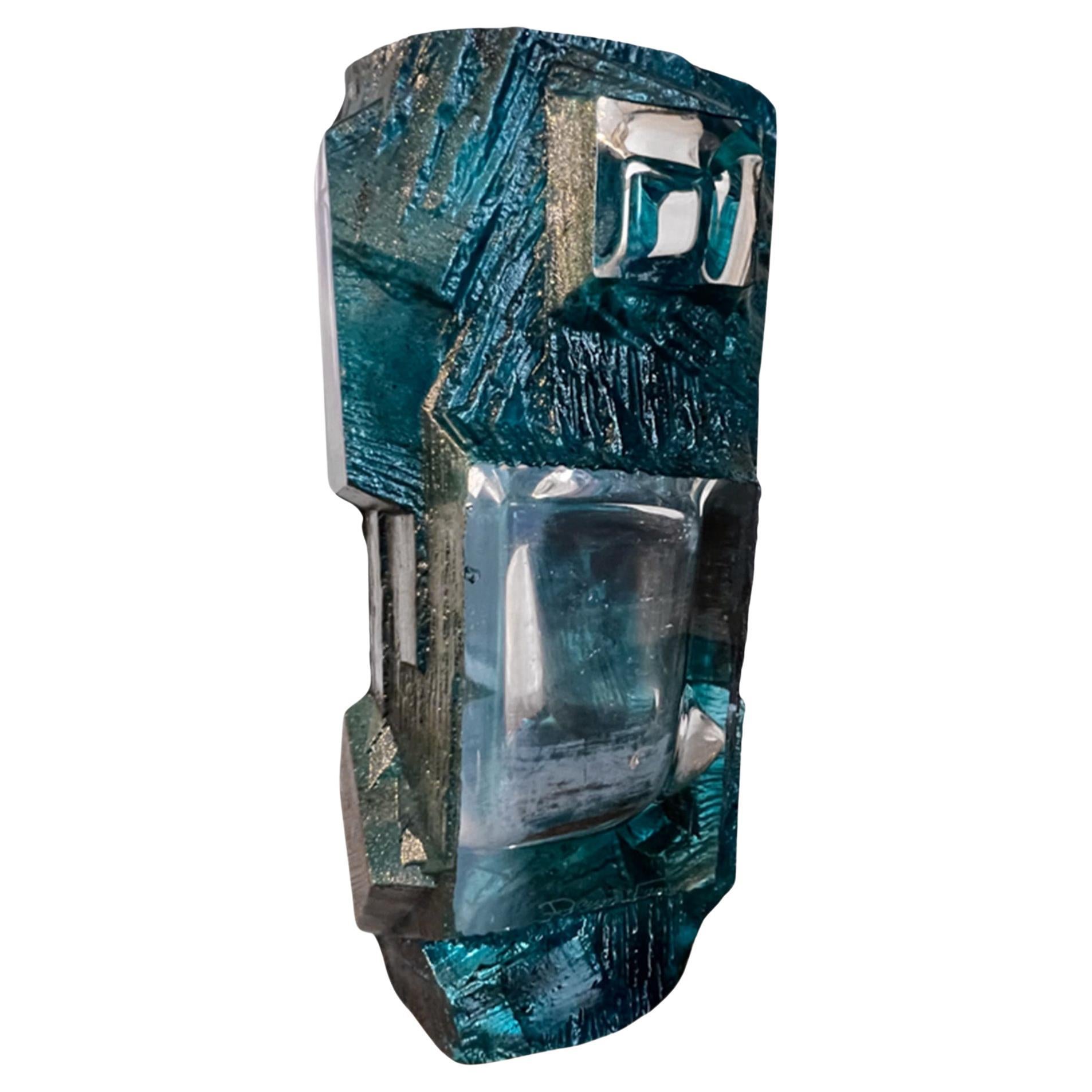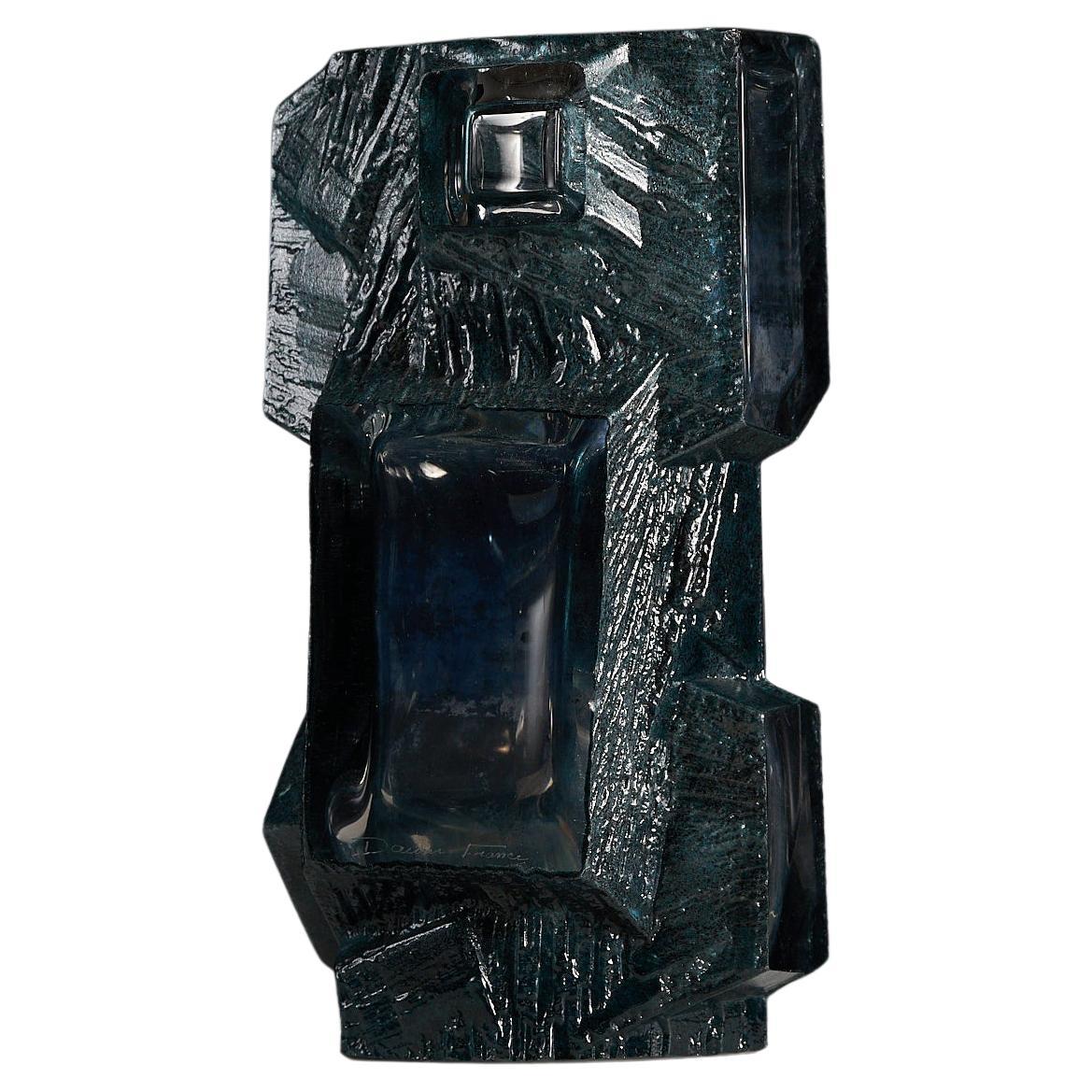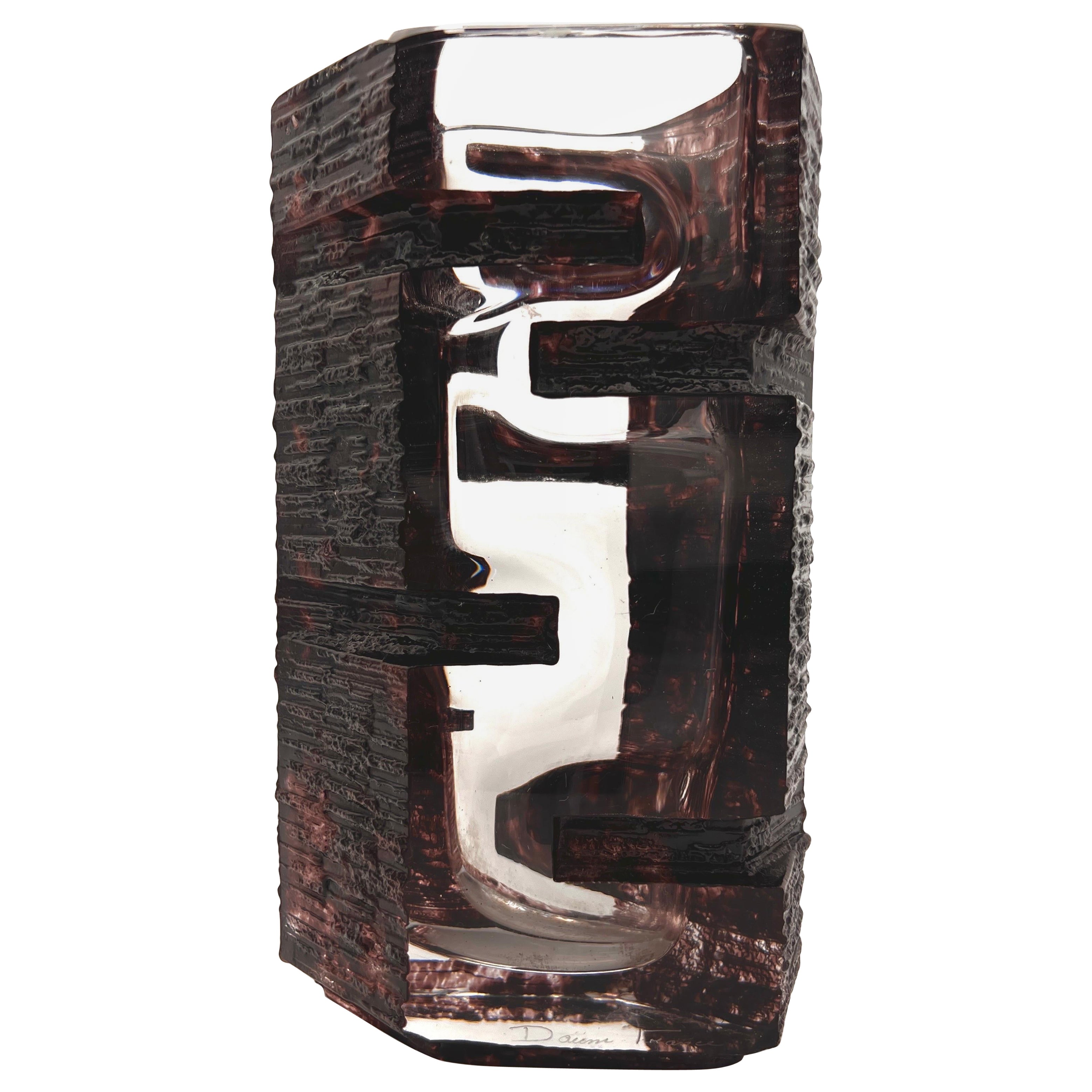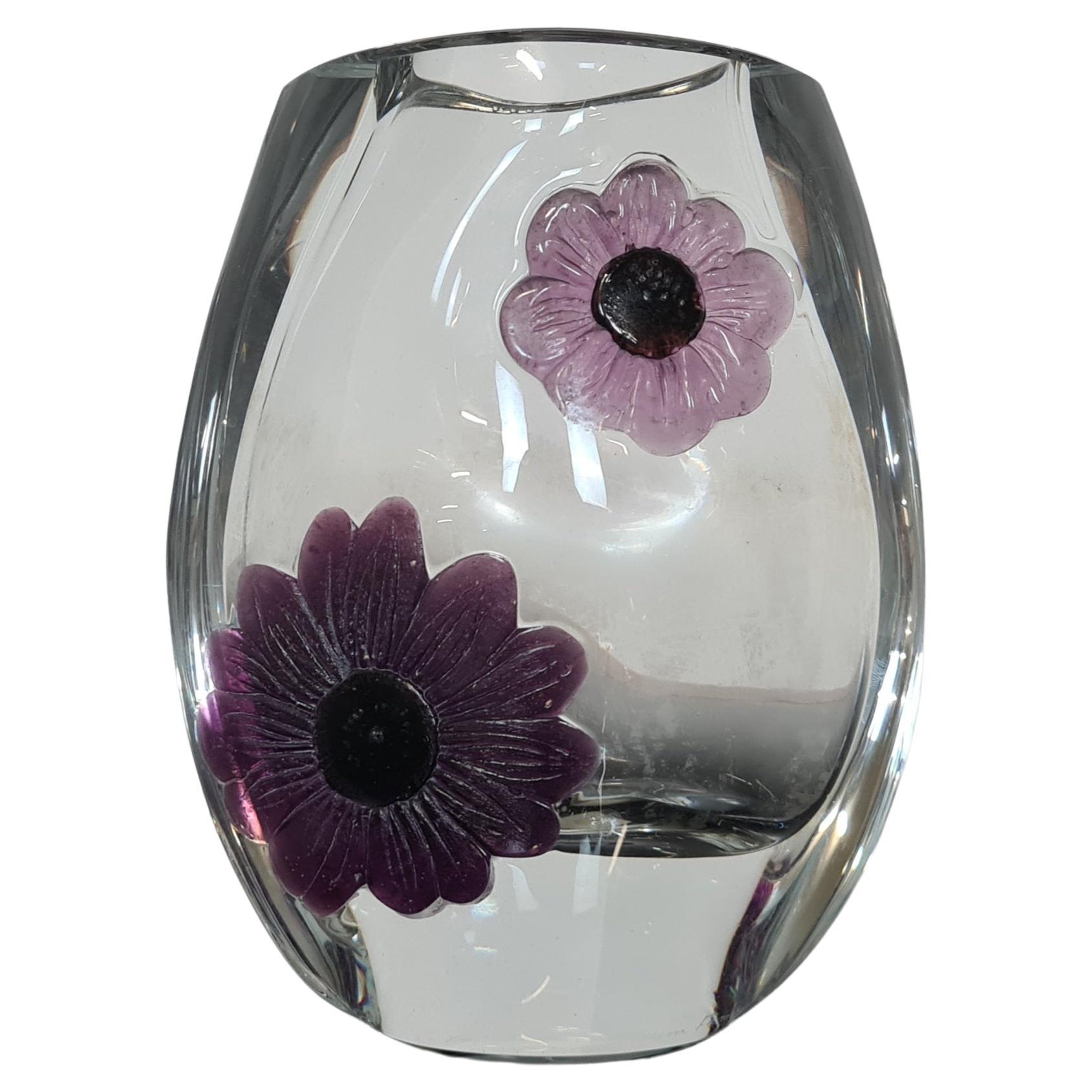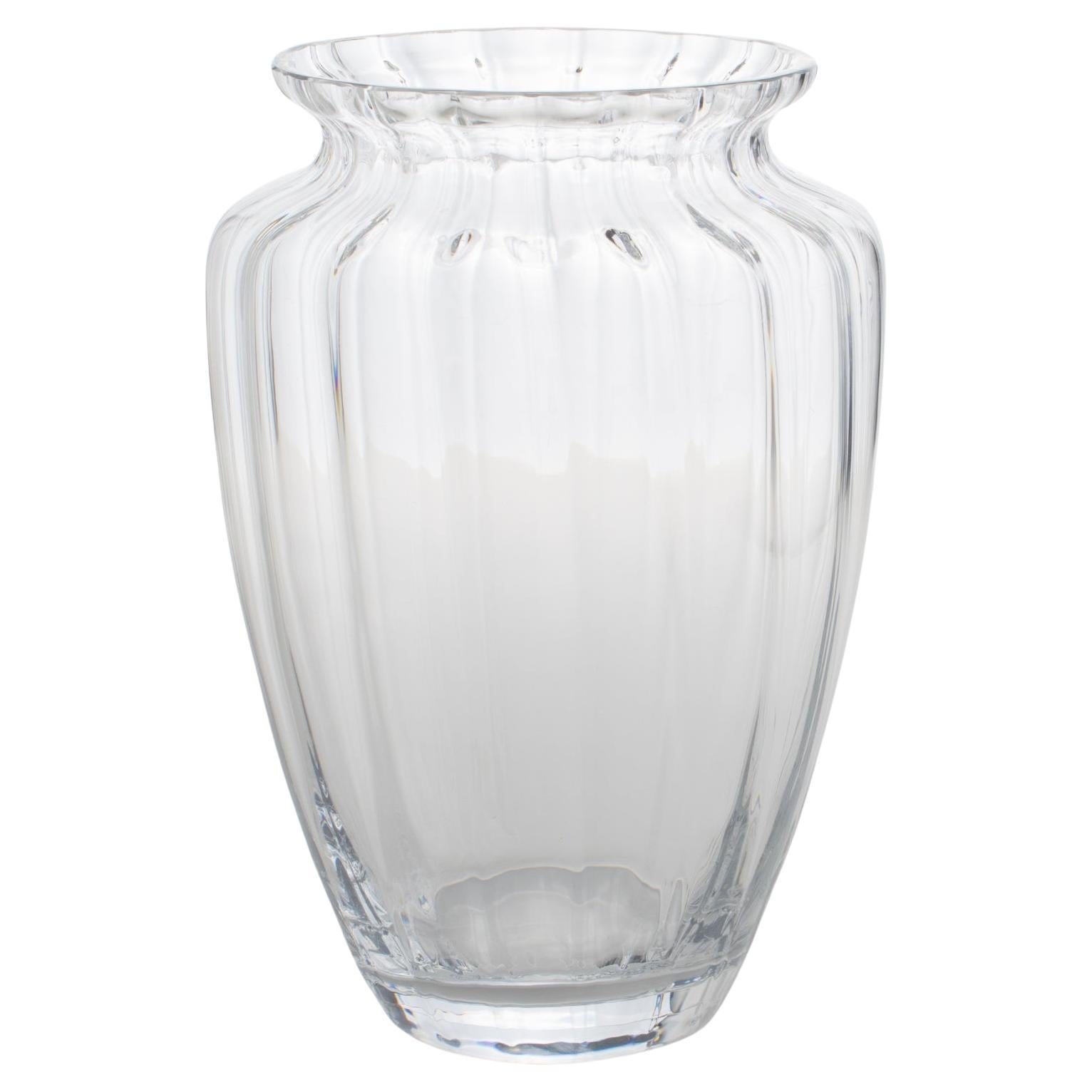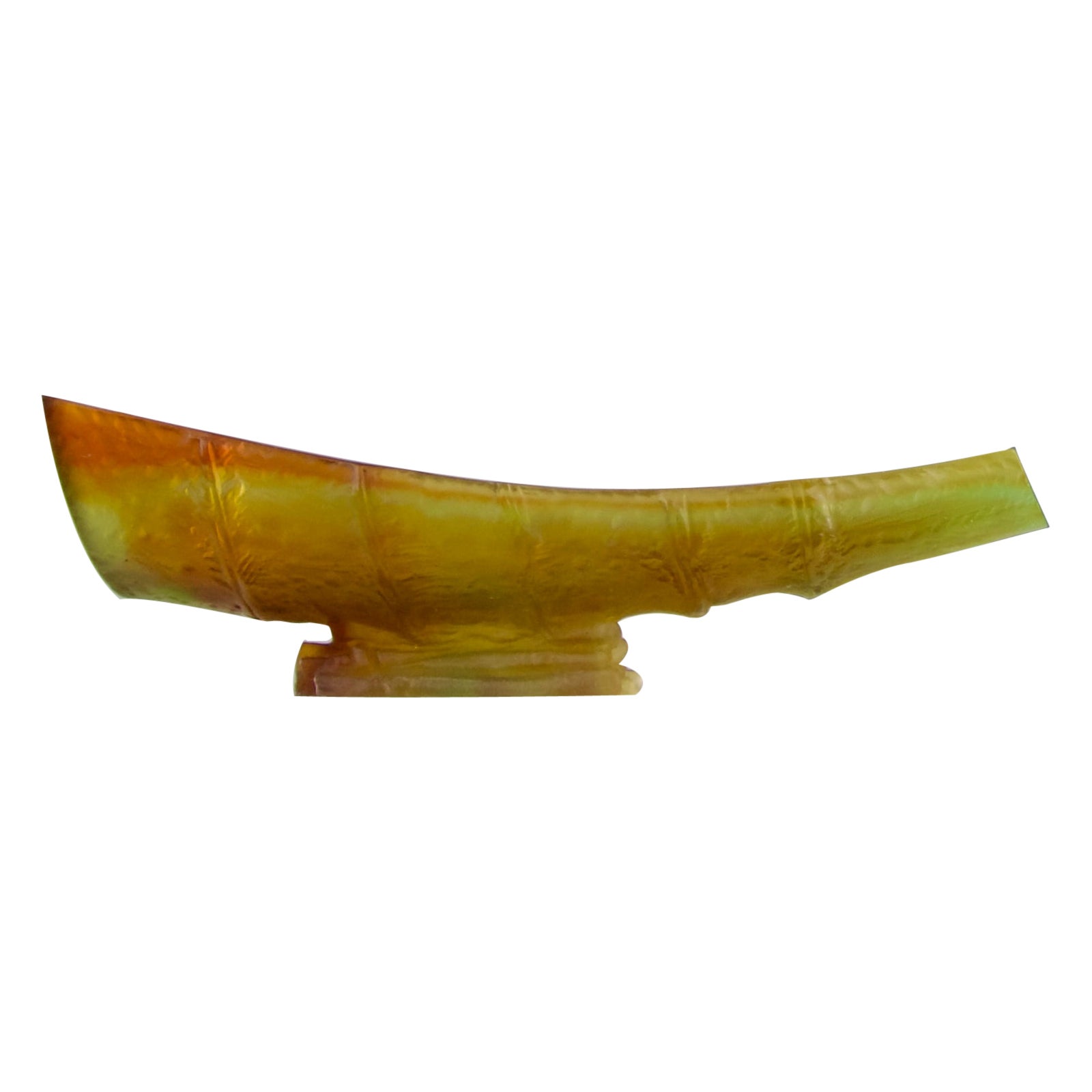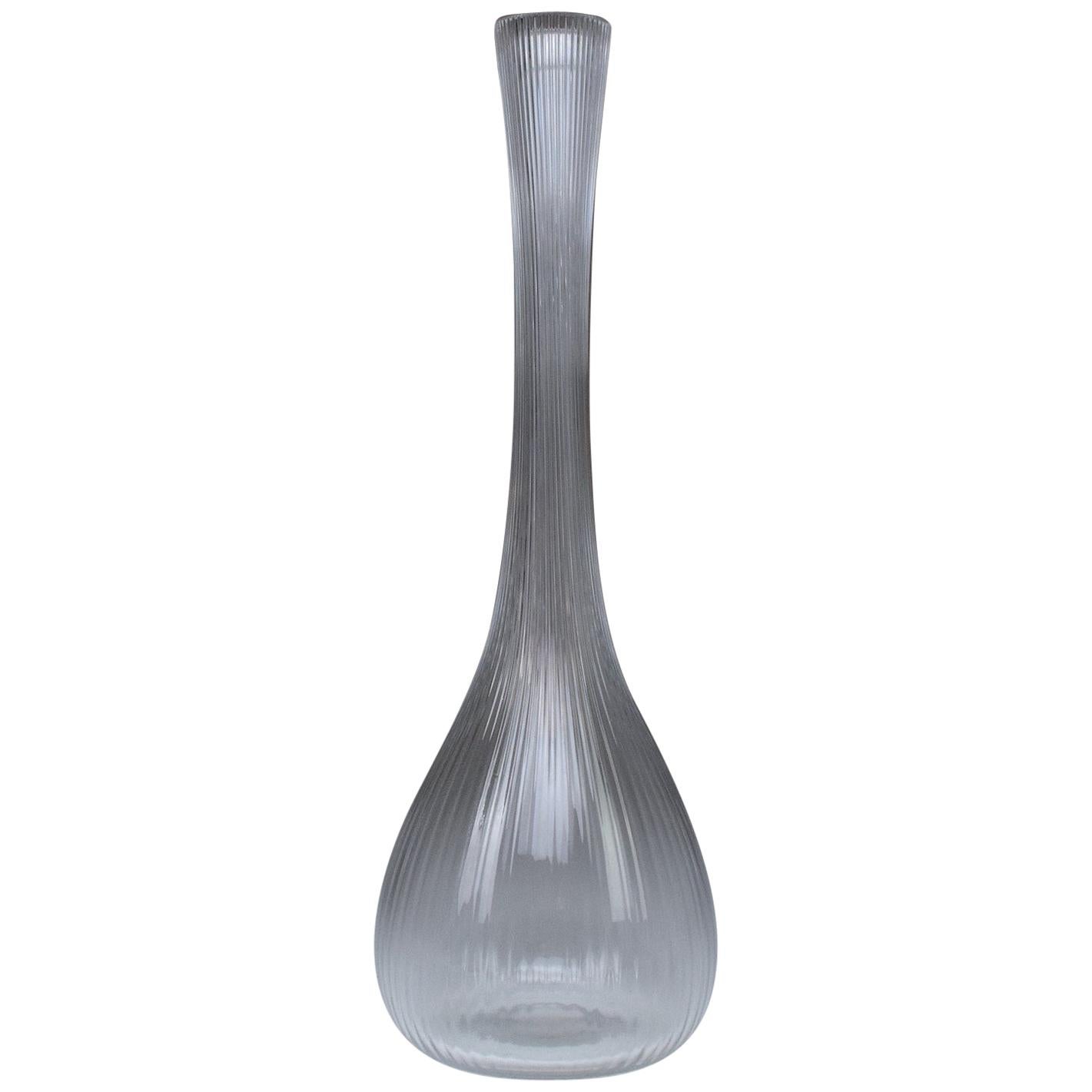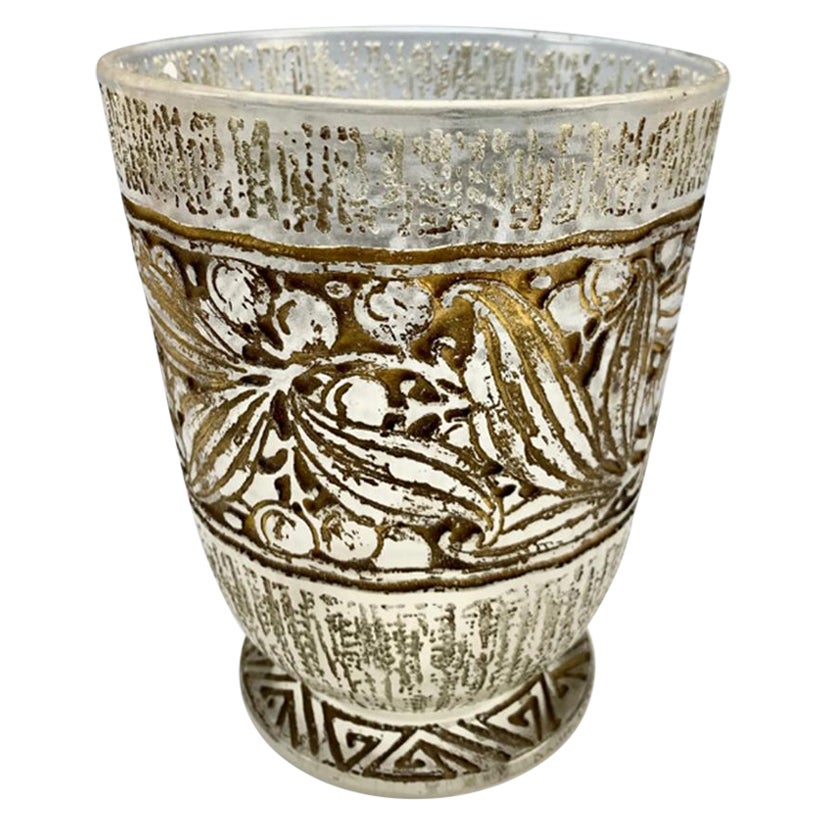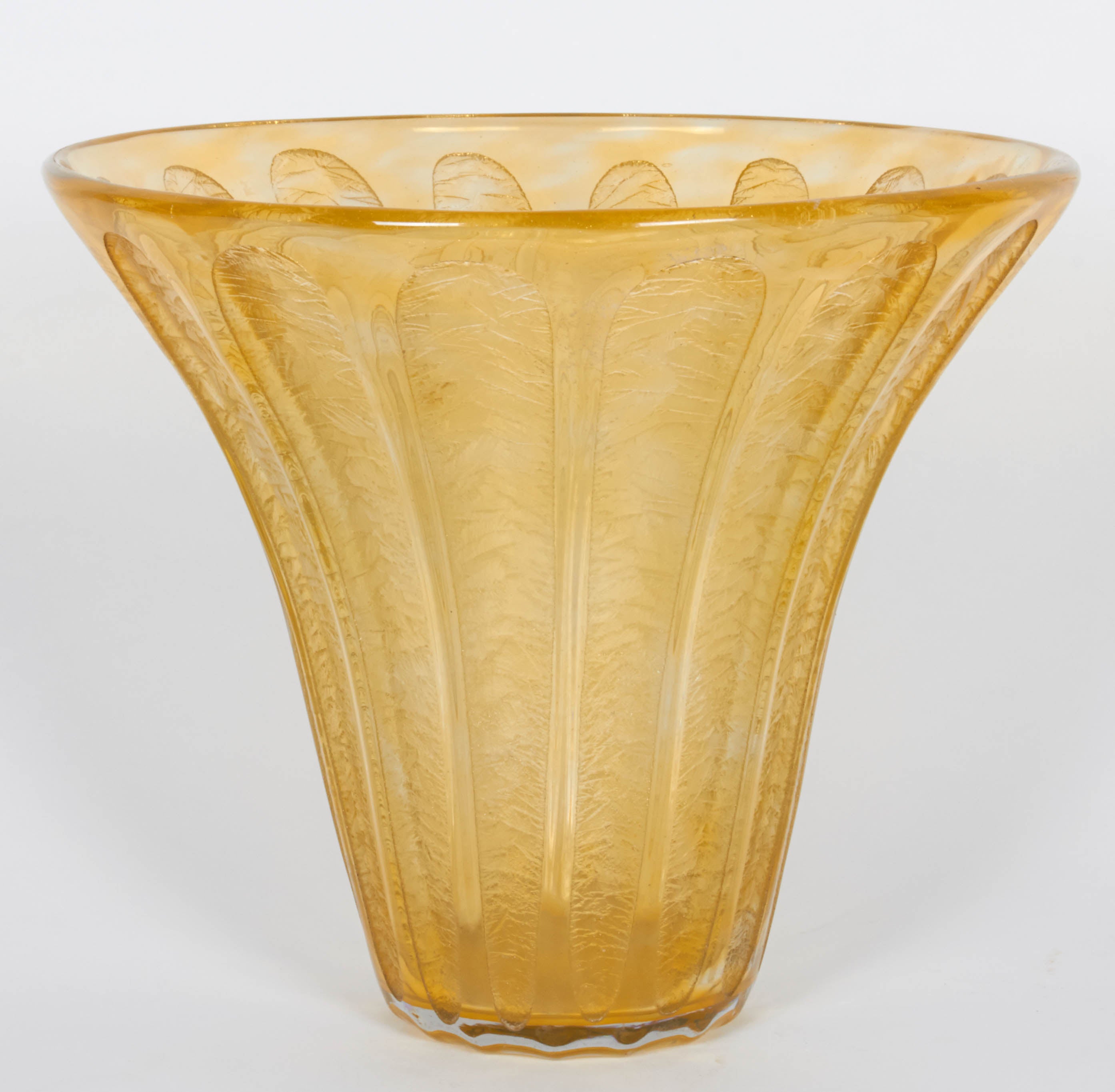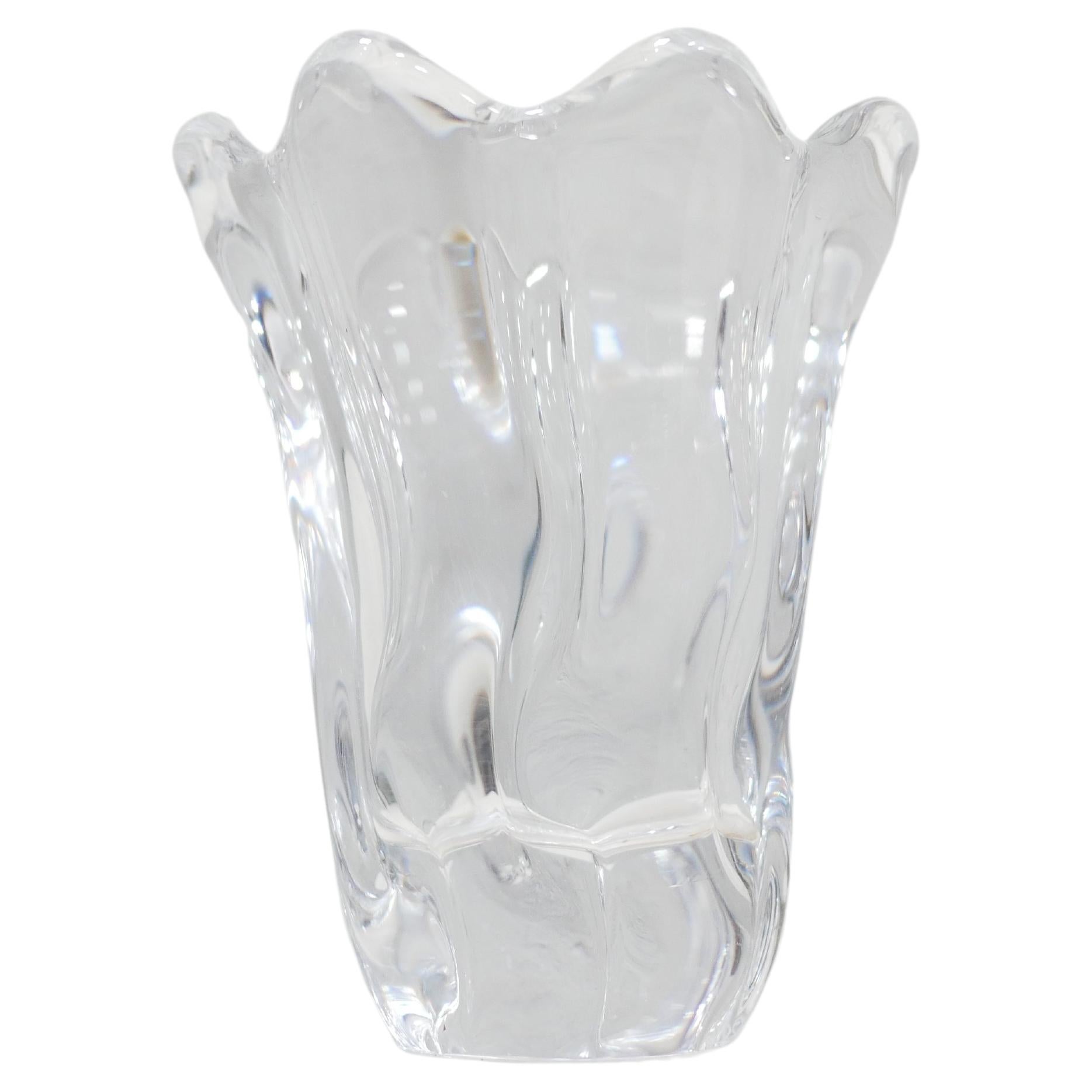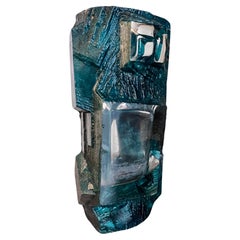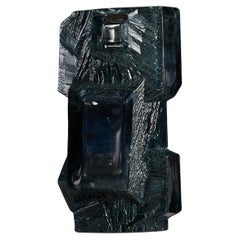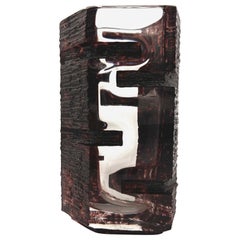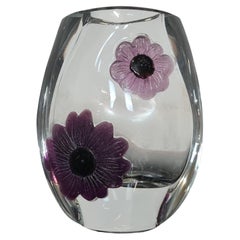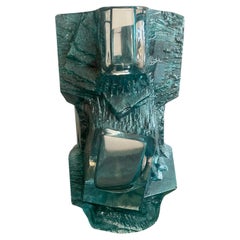
Vase « Argos » model by Cesar for Daum France
View Similar Items
1 of 10
Vase « Argos » model by Cesar for Daum France
About the Item
Authenticity Guarantee
In the unlikely event there’s an issue with an item’s authenticity, contact us within 1 year for a full refund. DetailsMoney-Back Guarantee
If your item is not as described, is damaged in transit, or does not arrive, contact us within 7 days for a full refund. Details24-Hour Cancellation
You have a 24-hour grace period in which to reconsider your purchase, with no questions asked.Vetted Professional Sellers
Our world-class sellers must adhere to strict standards for service and quality, maintaining the integrity of our listings.Price-Match Guarantee
If you find that a seller listed the same item for a lower price elsewhere, we’ll match it.Trusted Global Delivery
Our best-in-class carrier network provides specialized shipping options worldwide, including custom delivery.You May Also Like
'Argos' Model Vase by César Baldaccini, Daum, France
By Daum, César Baldaccini
Located in London, GB
This fabulous glass vase was made by Daum in Nancy, France in the 1970s.
It looks very much like a piece of sculpture - no surprise given it's designer was César Baldaccini!
Titled...
Category
Vintage 1970s French Brutalist Vases
Materials
Glass
Argos Vase by Cesar Baldaccini for Daum, France, 1970s
By César Baldaccini
Located in Melbourne, VIC
The Argos vase by Cesar Baldaccini for Daum, France, 1970s, is a magnificent work of art that seamlessly blends form and function. Designed by the renowned French sculptor, Cesar Bal...
Category
Vintage 1970s French Mid-Century Modern Vases
Materials
Glass
Cesar Baldaccini ( 1921-1998 ) Vase model Argos for Daum France 1970
By César Baldaccini, Daum
Located in palm beach, FL
Vase A by Cesar Baldaccini for Daum, France, 1970s, is a magnificent work of art that seamlessly combines form and function. Designed by renowned French sculptor Cesar Baldaccini, this multi-faceted vase is a stunning example of his mastery of sculptural forms. Made by renowned French glassmaker Daum, this vase features a highly polished, multi-faceted surface that reflects and refracts light in fascinating ways. The veneers are perfectly aligned and flawlessly executed, creating a breathtaking sense of depth and texture. The vase is signed "Daum France", which adds a touch of authenticity and provenance to the piece. This is a true collector's item, sought after by art lovers and collectors around the world. Functional, the Argos vase is ideal for presenting flowers or other decorative objects. Its sculptural form and multi-faceted surface create a dynamic backdrop that enhances the beauty of any arrangement. Overall, the Argos vase by Cesar Baldaccini for Daum, France, 1970s, is a masterpiece of design and craftsmanship. Its striking form, impeccable craftsmanship and exceptional provenance make it a highly coveted piece that is sure to impress and enchant anyone who sees it.
Cesar Badaccini (1921-1998)
His parents, Omer and Lelia Baldaccini, Italians of Tuscan origin, ran a bar in Marseille where César was born, with his twin sister Amandine, in 1921 in the popular district of Belle-de-Mai, at 71 rue Loubon, in the 3rd arrondissement1. "I am basically an absolute self-taught," he will say2. At the time, he designed and tinkered with carts for his little brother with cans. Nevertheless, after first working for his father (he also helped a butcher neighbor for a meager salary after leaving school at the age of twelve), he followed the courses of the École supérieure des beaux-arts de Marseille from 1935 to 1939; in 1937, he obtained three prizes, in engraving, drawing and architecture3.
Not mobilized during the war (he also escaped the STO), he lived on scams before settling in Paris to be admitted, in 1943, to the École nationale supérieure des beaux-arts with Michel Guino, Albert Féraud, Daniel David, Eugène Dodeigne and Philippe Hiquily, like him in the workshop of Marcel Gimond. In 1945, he returned to Marseille to marry Maria Astruc, with whom he set up a business (they divorced in 1959). He returned to Paris in 1946 where he occupied a studio in an old brothel at 21 rue de l'Échaudé, whose rooms, following the Marthe Richard law, had been assigned to students4. There he met Émilenne Deschamps, who would later become one of his muses.
Faced with the impossibility for him to work the stone, because of its cost, he turned to other materials3. From 1947, he worked on plaster and iron. In 1949, he was introduced to arc welding in an industrial carpentry in Trans-en-Provence and used lead in pushed sheets and welded iron wires. In 1951, he visited Pompeii and remained marked by the casts of the bodies of the inhabitants caught in the lava3. In 1952, he used inexpensive recovered materials and made his first sculptures in welded scrap metal: his means were then still modest. Thus, for lack of money and to afford marble, César will recover in the scrap dumps the materials of his first sculptures: tubes, bolts, screws that become insects or end up in the powerful curves of the Venus de Villetaneuse (1962).
In 1954, he exhibited at the Lucien Durand gallery in Paris and obtained the "collabo" prize for a sculpture entitled Le Poisson5, made in Villetaneuse, a city where he worked for a dozen years thanks to the help of a local industrialist, Léon Jacques6. He gained fame when his work was bought for 100,000 francs in 1955 by the State for the National Museum of Modern Art7. The same year, he exhibited at the Salon de Mai. The following year, the MNAM bought Chauve-souris from 1954 and the museum of modern art in the city of Paris Le scorpion from 1955. From 1954 (Torse, MOMA), he also made sculptures in welded metal, then in partially polished bronze, of busty women (Ginette, 1958, Victoire de Villetaneuse, 1965).
In 1956, he participated in the Venice Biennale then in the São Paulo Biennale and in the Documenta II in 1959. In 1958, he signed a contract with the Parisian gallery Claude Bernard3. In 1961, he approached Marino di Teana and joined the group of Nouveaux réalistes, a movement founded by art critic Pierre Restany8, including Arman, Jean Tinguely, Niki de Saint Phalle and Gérard Deschamps.
When he could afford a workshop in 1957, rue Campagne-Première in Paris, he married Rosine Groult-Baldaccini (met at the Beaux-Arts in 1948) with whom he had a daughter, Anna, a year later. He also begins to frequent the world of the In 1968, he created at the National Manufacture of Sèvres a porcelain Ashtray published in fifty copies. Made of porcelain with a semi-matt pearly cover, it represents a plaster mold used for the production of the pieces, and was produced from an original aluminum model. In 1971, during a premiere at the Lido, he found more media than him: Salvador Dalí, the master of extravagance. He debates the same year in Italiques with François Truffaut, Lucien Bodard and Asher Ben...
Category
Vintage 1970s French Mid-Century Modern Vases
Materials
Glass
Coppelia vase by Daum France, 1980s'
By Daum
Located in Torino, IT
Coppelia model vase produced by Daum France.
Refined crystal vase with mauve and pink glass paste floral decoration.
Produced in the 1980s' this vase combines the innovation and hi...
Category
Vintage 1980s French Vases
Materials
Crystal
$471 Sale Price
20% Off
Daum France Crystal Vase
By Daum
Located in Atlanta, GA
Daum Nancy France designed and crafted this lovely tall crystal vase circa 1970. This typical Daum classic design boasts elegance and timelessness. The etched Daum signature is on th...
Category
Vintage 1970s French Mid-Century Modern Vases
Materials
Crystal
$1,000 / item
Daum Crystal Vase French
By Daum
Located in New York, NY
A beautiful, small, and substantial French crystal vase from luxury Maison, Daum, in the modern Minimalist styles, circa 20th century, France. The piece is rectangular in shape with ...
Category
20th Century French Minimalist Vases
Materials
Crystal
Recently Viewed
View AllMore Ways To Browse
Wall Sconce Made In Usa
1980s Italian Chair
Antique Wood Wall Panels
Black And White End Tables
Ceramic Sconces
Glass Top Dining Table 1970s
Multi Functional
Silver Glass Tea Cups
Small Bronze Lamp
Spanish Oak Furnitures
Swiss Wood Chair
Blue Painted Lamps
Dining Tables With Carving
Flush Mount Small
Geometric Wall Mirrors
Height Adjustable Table Base
Neo Modern Furniture
Organic Wabi Sabi
